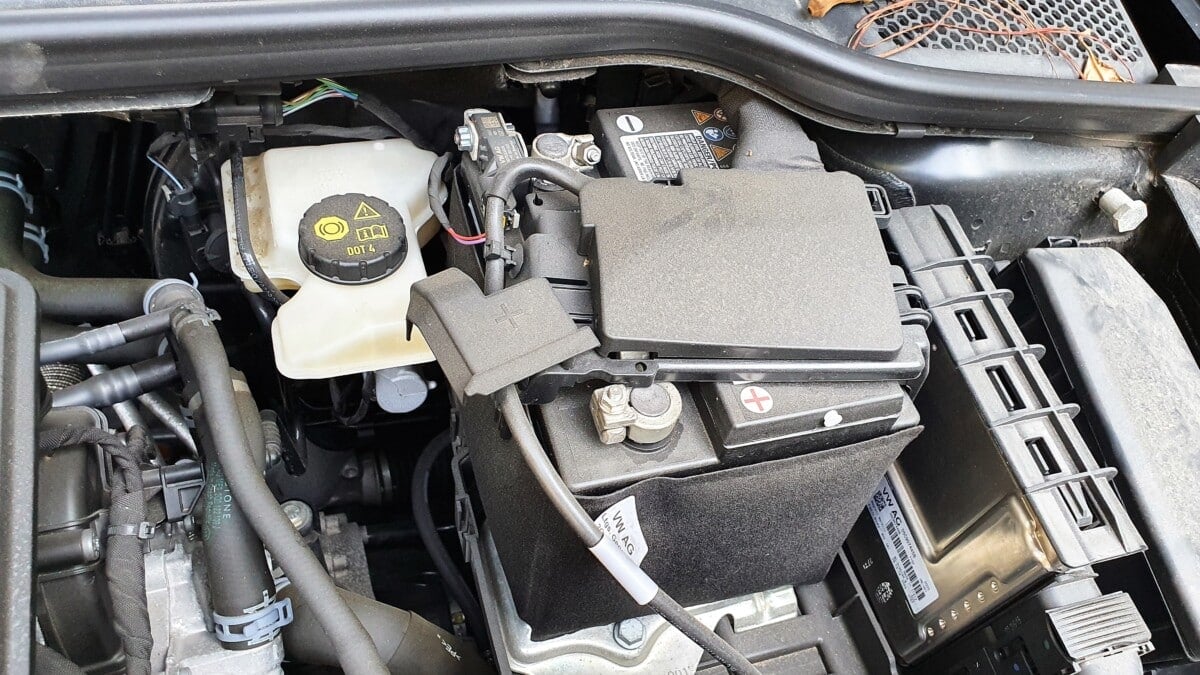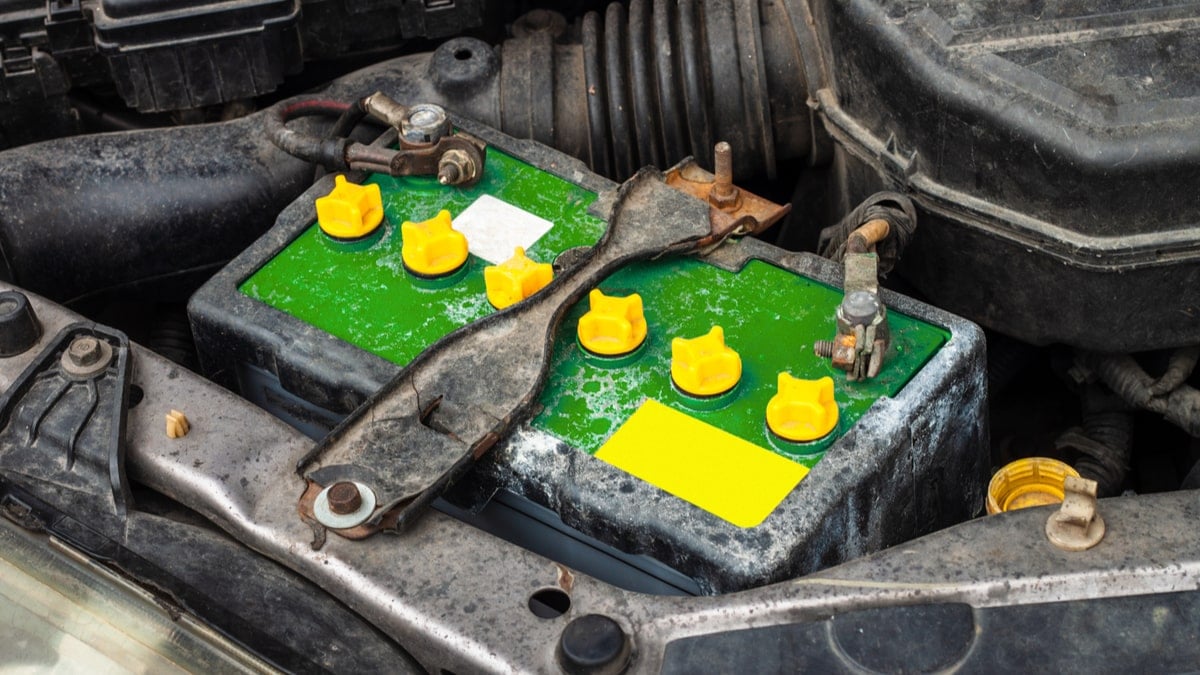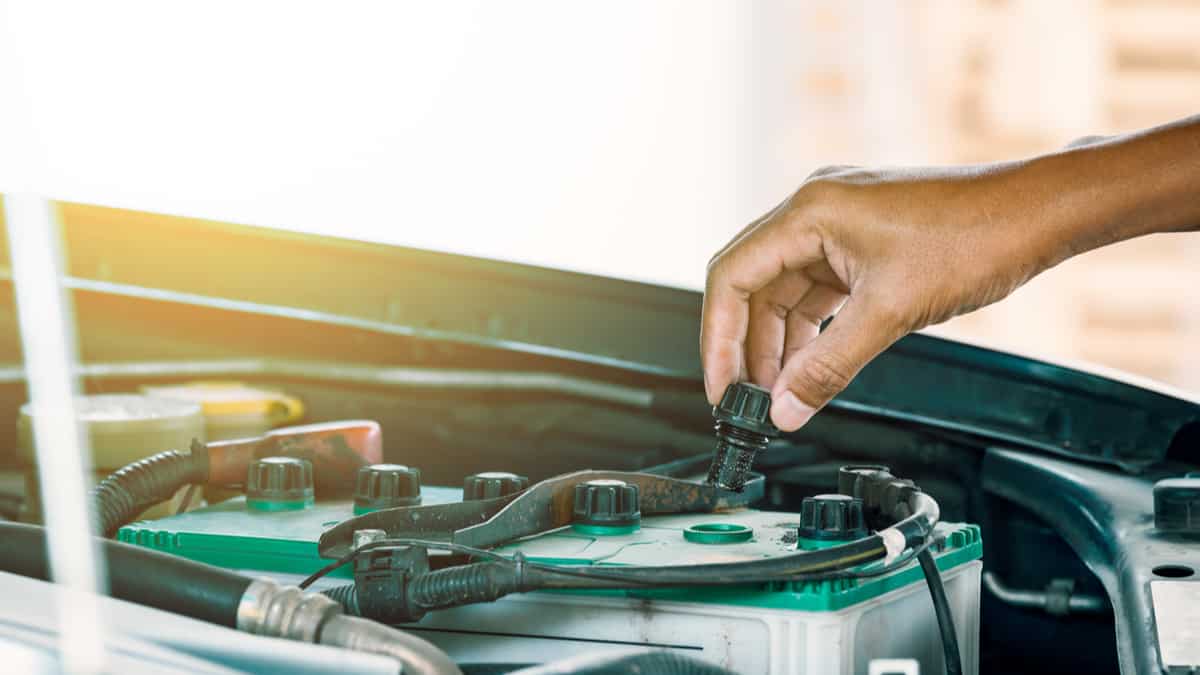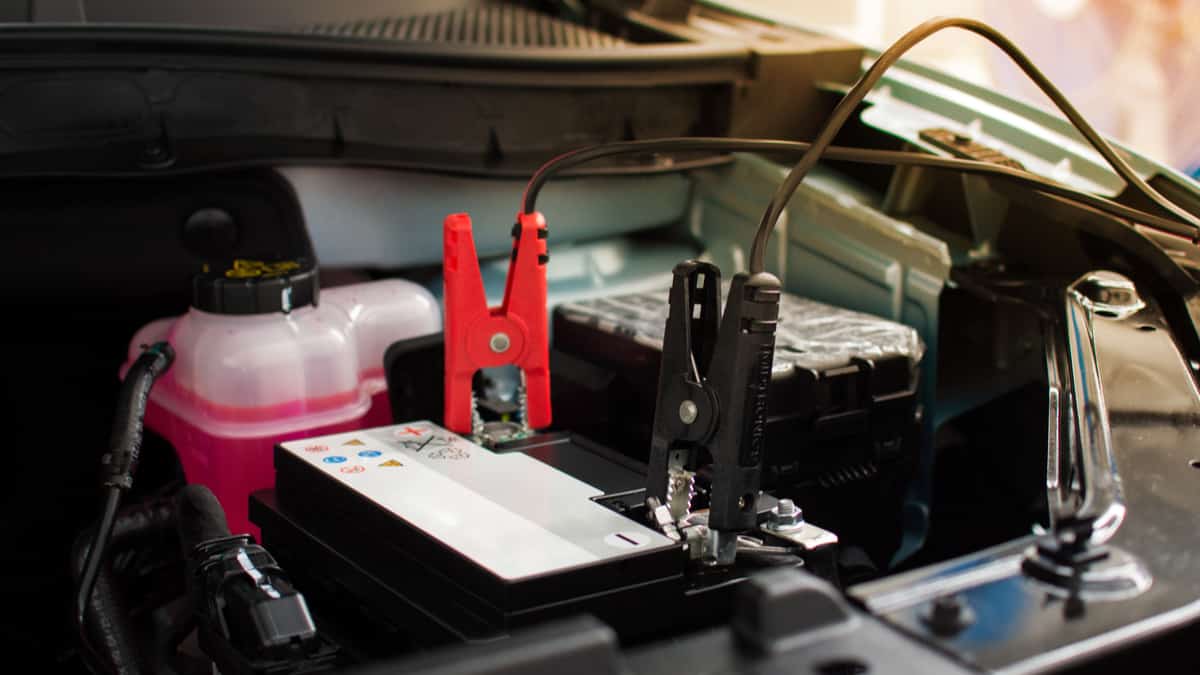Dealing with a dead car battery can be a real pain, which is why regular battery maintenance is required to keep your car ready to go. One of the main questions you may wonder is, how many volts does a car battery have? This is an important figure to understand, so you can keep your car battery in good health.
In this guide, I look at the ideal range of car battery voltage. I also discuss how to test the car battery voltage.
How Many Volts is a Car Battery – Ideal Range
The voltage of a car battery should be between 12.2 to 12.6 volts when the engine is turned off. A fully charged car battery voltage falls between 13.7 and 14.7 volts with the engine running. With the battery charge at 75%, the voltage can drop to 12.4 volts. At 25% charge, the voltage will measure around 12 volts.
By measuring the car battery, you can see where the voltage registers, and you can compare it to the ideal car battery voltage range. However, even if it says it’s a 12-volt battery, different types of car batteries can measure slightly differently than others. It’s important to see what your particular car battery is rated for before measuring the voltage to know if the readings are good or bad.
Steps to Test Car Battery Voltage
1. Configure Multimeter
With a multimeter, you can quickly get a readout of the car battery’s voltage. These devices are quite inexpensive to buy, and they will give you accurate readings.
Allow the car to sit overnight before you test it. It’s best to test it after the car has been resting and then again with the engine running. Set the multimeter to DCV at 20.
RELATED: 10 Best Multimeters – Review & Buyer’s Guide
2. Test Battery
Take the black lead of the multimeter and touch the negative terminal. Make sure you don’t touch the leads together.
With your other hand, place the red lead (positive end) on the battery’s positive terminal. Once you read this measurement, you can follow the same steps with the engine running and record this figure as well.
3. Read Measurement
Depending on what type of multimeter you own, you will have a different way of reading the measurement. It could be shown on a dial range, or you might have a digital multimeter that presents the figure on a screen.
With the engine turned off, the voltage on the meter should be 12.4 to 12.6 volts on a healthy battery. The measurement should rise after you start the car engine and the alternator starts to charge the electrical system.
If the reading is negative, you have the leads connected to the wrong sides, and the circuit is flowing in the wrong direction. Switch the positive and negative to get a positive reading.
RELATED: How to Recondition a Car Battery at Home (5 Easy Steps)
Test Car Battery Without a Multimeter
If you can’t access a multimeter, you can still test the car battery. While the results won’t be as accurate as if you had the tool, these steps can give you an idea of the car battery’s health. You will at least recognize if the car battery is going to leave you stranded sometime soon.
- Park the car in front of a garage door or wall, where you can see the headlights clearly.
- Turn on the headlights for 15 minutes with the engine off.
- Turn the ignition to start the vehicle.
- The lights might dim briefly as the starter cranks the engine, but they should quickly regain brightness.
- If they become extremely dim or the engine struggles to start, you could be facing a dying or dead battery.
- If the lights don’t come back around with the engine running, you could also be looking at a discharge due to a failing alternator. The electrical equipment and lights should gain the power needed with the engine running, because the alternator charging system supplies power.
When everything is working as it should, the headlights remain constant and bright, whether you are idling or revving the engine. Otherwise, have the car battery looked at.
READ MORE: How to Check Car Battery Health at Home (8 Steps)
Performing a Car Battery Load Test
With your multimeter, you can also perform a battery load test. Set the multimeter to 20 volts once again. If you don’t have this setting, it must at least be set above 15 volts.
Test the battery voltage before you move on. With the vehicle off, turn the headlights on for two minutes. The battery should be able to support the headlights without interruption during these two minutes.
Turn off the headlights and connect the multimeter to the battery once again. The reading should still be normal, even after running the headlights. If it is less than that, it’s not holding a charge well.
Even better is to use a battery tester, this will be able to charge the battery so you can see the health of the battery. If the voltage drops drastically when you activate the load tester, you know that your battery is probably bad.
RELATED: 10 Best Car Battery Testers & Analyzers – Review
How Many Volts Does a Car Battery Need to Start?
The car battery needs a different amount of voltage to start based on a few different factors. The season – whether it is winter or summer – can affect the starting voltage. Additionally, gas and diesel engines have different requirements, as well as the size of the engine. Beyond that, whether the engine is cold or already warmed will also make a difference.
In general, if the engine hasn’t been running, the battery voltage will be around 12.6 volts. If the voltage reading goes below 12 volts, the battery might still be able to crank over the engine. Once it goes under 11.8 volts, the engine will struggle to start. It will be nearly impossible to start a car engine with a low voltage under 11 volts.
When Should Car Battery Be Replaced?
It is important to test the car battery every six months as the battery is one of the most important components in the car because it provides power to all electrical accessories in your car when the engine is not running. You should also check it if the temperatures drop significantly, because colder weather can put a lot of stress on a battery that’s already struggling.
If the battery isn’t holding a charge the way it should, you should replace it. If not, you could end up stranded with a car engine that won’t start. Of course, this situation never happens when it’s convenient.
READ MORE: How Much Does It Cost to Replace a Car Battery?
Most car batteries will last at least four years before they should be replaced. However, the way that you treat the battery has a lot to do with how long it will last. You can extend the battery life by taking longer drives. If you can only make short, irregular trips, it’s best to hook the car battery up to a charger when it is at home. Additionally, you want to physically inspect the battery periodically and keep the terminals free from corrosion.
Categories: Car Battery, Electric















